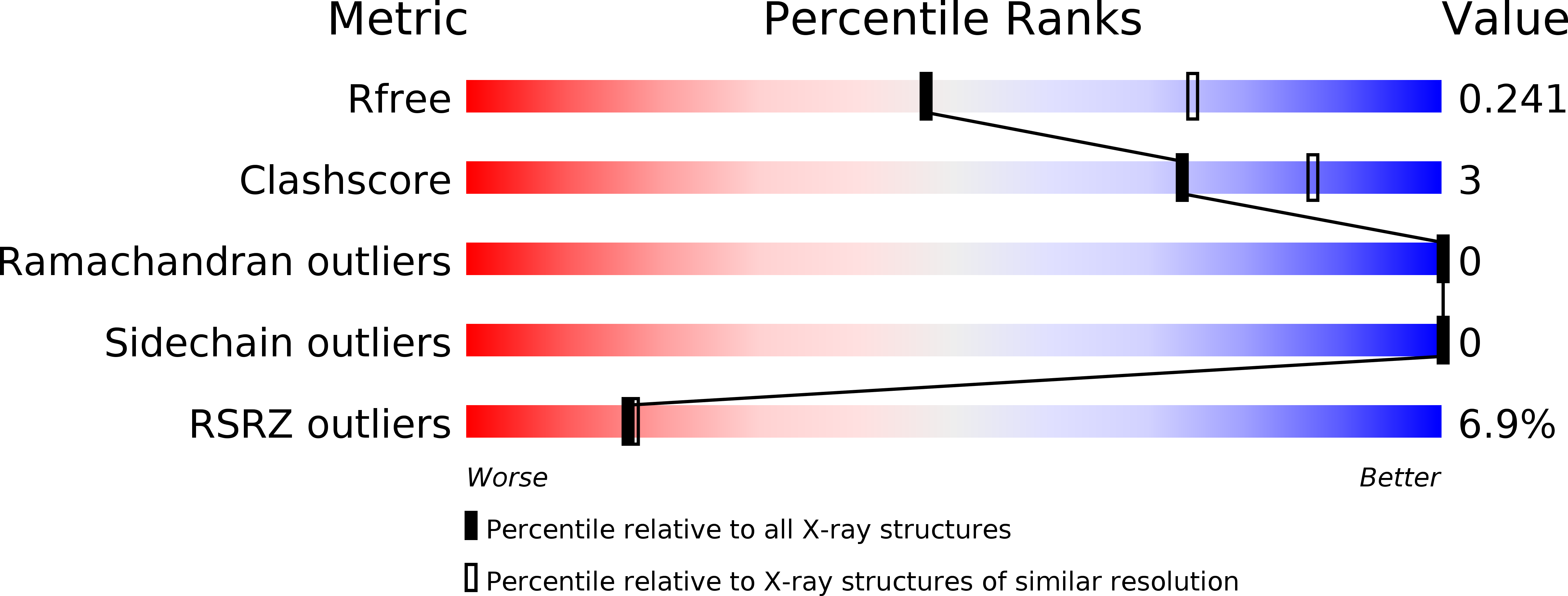
Deposition Date
2018-01-23
Release Date
2018-05-02
Last Version Date
2024-11-13
Entry Detail
PDB ID:
6C7Y
Keywords:
Title:
Crystal structure of inhibitory protein SOCS1 in complex with JAK1 kinase domain
Biological Source:
Source Organism:
Homo sapiens (Taxon ID: 9606)
Gallus gallus (Taxon ID: 9031)
Gallus gallus (Taxon ID: 9031)
Host Organism:
Method Details:
Experimental Method:
Resolution:
2.50 Å
R-Value Free:
0.24
R-Value Work:
0.20
R-Value Observed:
0.21
Space Group:
P 41 21 2


